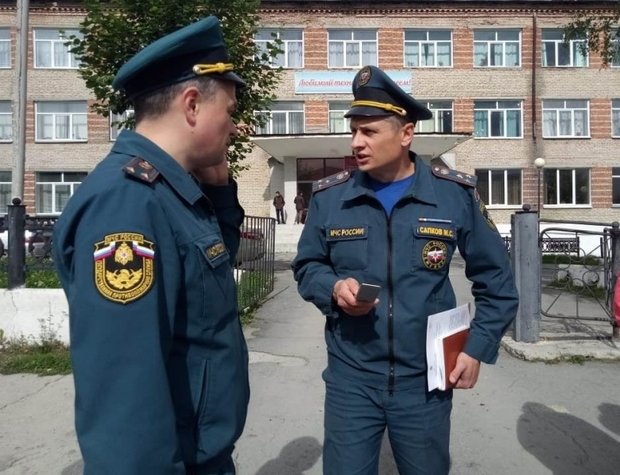Earthquake in Ural Mountains Region: ''Furniture shook, dishes rattled, a cat shouted''
A 5.6 magnitude earthquake took place early in the morning on September 5th in the Ural Region, Russia. No injured or killed, but the locals were quite scared. The houses sometimes cracked, plaster partially collapsed. In the area of the epicentre, 12 kindergartens and schools were damaged. Parents were asked to take children home, evacuation was carried out in a number of social objects. The tremors were repeated a few hours later, according to experts, they are of tectonic nature. They were felt in Chelyabinsk Oblast and Bashkortostan. Read more in the material of Realnoe Vremya.
''It was like a train passing just next to you — it shook so hard!''
The first tremors in the Urals were recorded at 3:58 local time (1:58 MSK). The residents of Chelyabinsk Oblast immediately brought down the emergency line, where they received more than 600 calls. The epicentre of the earthquake fell on Katav-Ivanovsky District, it originated at a depth of 10 kilometres. Fortunately, it did not affect the work of Rosatom's nuclear enterprises.
Katav-Ivanovo District introduced a state of emergency. 12 kindergartens and schools were damaged here, the city hospital had to be evacuated because of cracks in the walls – the patients are sent to Ust-Katav. As Chairman of the local council of deputies Galina Fedoseeva reported in her account in social networks, cracks appeared in three five-story buildings on Stepan Razin Street and in three houses in the town of Stroygorodok, some with a width of two to three centimetres.
Classes in schools were cancelled, kindergartens are closed — parents were asked to take their children home. The post and a number of social facilities were also evacuated, local resident say. The leadership of the region is assessing the impact.

''We live in the North-West of Chelyabinsk, felt nothing, but a colleague from Leninsky district said that they woke up at four o'clock, her mother thought she was dizzy. Another colleague from Korkino, near Chelyabinsk, woke up from that the sofa and the rest of the furniture shook, dishes rattled, the cat yelled. And my friend, she lives closer to the epicentre, thought it was a train passing just next to her — it shook so hard,'' Dinara Giniatullina, an inhabitant from Chelyabinsk, told Realnoe Vremya.
''The Urals is experiencing tectonic uplift — by 5 mm a year''
Head of the Department of Geology and Geomorphology at the Bashkir State University Iskhak Farkhutdinov explained that this earthquake in the Urals is a standard process.
 ''At the moment, the Urals are experiencing tectonic uplift — by 5 mm a year. It happens that the plate is retarded in motion, but the energy does not go away, it accumulates in the form of these 5 mm a year and then such earthquakes happen once every 10 years. Fortunately, small, because we are inside the continent, that is, it is intercontinental mountain building, unlike Japan and the Kurils,'' Farkhutdinov says.
''At the moment, the Urals are experiencing tectonic uplift — by 5 mm a year. It happens that the plate is retarded in motion, but the energy does not go away, it accumulates in the form of these 5 mm a year and then such earthquakes happen once every 10 years. Fortunately, small, because we are inside the continent, that is, it is intercontinental mountain building, unlike Japan and the Kurils,'' Farkhutdinov says.
The fact that the Urals have not had earthquakes for a long time is only in comparison, says the interlocutor of the newspaper. For example, tremors with a 4 magnitude tremors were in 2015 and 2010, and 5.5 magnitude tremors, as on September 5, occurred in 1995 in Solikamsk, before that — in 1989 and 1990 — in Sverdlovsk Oblast.
''Just people forgot, but it is a normal phenomenon for the Urals. The largest earthquake in the Urals was in 1914 with a 6.5 magnitude — it is when plaster cracks on buildings, buildings shake, but fortunately, we never had such destructive earthquakes, and they are not predicted. The maximum permissible magnitude here is 8 points, but the maximum that was — 6.5. Aftershocks is a normal phenomenon after the main earthquake, you might say, a kind of echo,'' the geologist added.
According to Iskhak Farkhutdinov, such tremors affect the entire Urals: Perm Krai, Sverdlovsk Oblast, Bashkortostan, partly Orenburg Oblast. But if in the Urals they have more tectonic nature, then platform Tatarstan is more characterized by man-made earthquakes, that is, associated with the active development of oil and gas, when oil is extracted and water is pumped: ''Just when we build a reservoir — the natural balance is disturbed — it can also cause small earthquakes.''
''It is the way the mantle affects the shell of the Earth''
Yury Bubnov, the leading specialist of the Department of geological environment monitoring in Tatarstan is also agree with his Bashkir counterpart. According to him, the earthquake that occurred in the Urals is of the same magnitude and depth as that was in the region in 2015.
 ''Ural is a suture, the junction of Europe and Asia, the processes take place at great depths. The source was at a depth of 10 km, and what happened at a depth of 2 km — it is already an aftershock. It is the way the mantle affects the shell of the Earth. Earthquakes are of natural character, because at this depth nothing is extracted. Activation is going on all over the planet, now in Kamchatka, and in Indonesia, volcanoes have intensified. There is a so-called system of suture joints of earth plates. This activation occurs annually, it depends more on the location of the planets and the influence of the Sun. Earthquakes occur with a certain cyclicity. The same Ural is a suture joint, though old, but it is also subject to the general influence of tectonic movements around the globe. Therefore the thread breaks where it is weakest, in this case it happened in the Urals,'' Yury Bubnov explained.
''Ural is a suture, the junction of Europe and Asia, the processes take place at great depths. The source was at a depth of 10 km, and what happened at a depth of 2 km — it is already an aftershock. It is the way the mantle affects the shell of the Earth. Earthquakes are of natural character, because at this depth nothing is extracted. Activation is going on all over the planet, now in Kamchatka, and in Indonesia, volcanoes have intensified. There is a so-called system of suture joints of earth plates. This activation occurs annually, it depends more on the location of the planets and the influence of the Sun. Earthquakes occur with a certain cyclicity. The same Ural is a suture joint, though old, but it is also subject to the general influence of tectonic movements around the globe. Therefore the thread breaks where it is weakest, in this case it happened in the Urals,'' Yury Bubnov explained.
Earthquakes can also happen in Tatarstan, experts say. ''We have the Volga-Kama fault system. If you remember on the map, the Volga River makes a turn near Kazan, and just below the Kama River flows into the Volga, so the Volga in this place repeats the zone of various tectonic joints. Earthquakes may occur in these places, and they have already been recorded historically. By the way, relatively recently, in the early 2000's, Yelabuga shook. And what was in Almetyevsk in 2008 was associated with the production of oil and injection of large masses of water — partly man-made. But the earthquake is a natural process, and there is nothing to be afraid of,'' says the geologist.